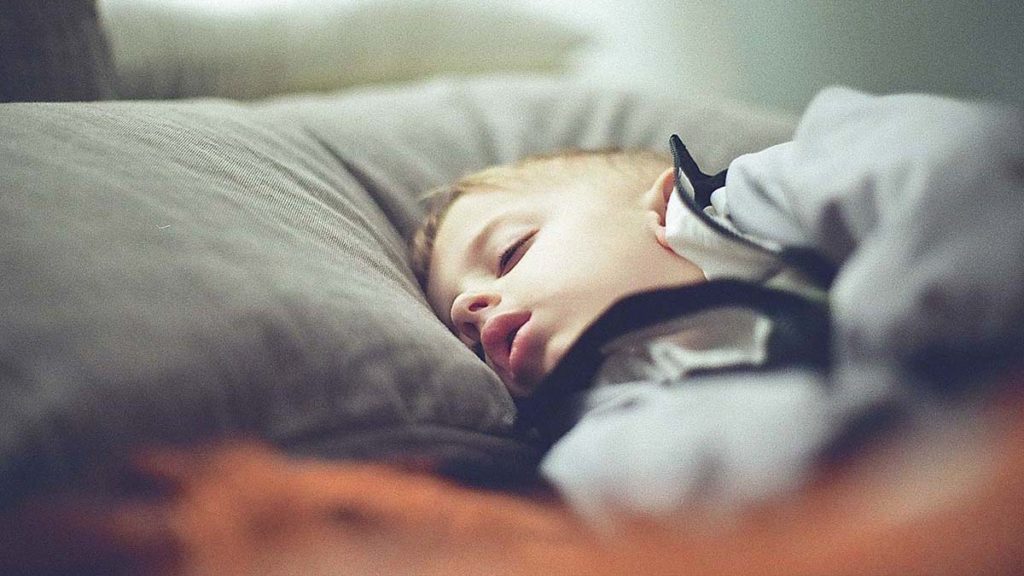When children are sleeping well, you can see the benefits in all aspects of their life. But when sleep becomes a challenge, you can feel that pressure everywhere.
It’s estimated between 40 and 80% of autistic children struggle with sleep issues. That’s almost twice as many as neurotypical children. When parents are battling with meltdowns caused by sensory overload, being woken at intervals in the night, or straining to get their child to go to bed at all, it is understandable why many are desperate to see a change.
We spoke to Charlie Tyack, a psychologist specialising in sleep, who gave us his perspective on why our children might find it harder than others to rest at night.
There’s more at stake than a quiet night
Sleeping well is about so much more than just feeling rested in the morning. When we’re asleep our brains are still very much at work, processing the information learned throughout the day and preparing us for the morning.
For children at school, sleep is especially important because it helps with learning and brain development. This is because our brains consolidate memory by processing information while we sleep. When learning something new – for example, a song on the piano – studies show that sleeping after a little practice results in better memory recall than just practising more.
We know that sleep is great for our physical health, too. It’s a trigger for our body to release hormones such as those that promote growth and tissue repair. Sleeping has also been shown to improve immune system performance.
It’s not just our mind and body that benefit, either. Matthew Walker’s Why We Sleep details a range of negative knock-on effects that lack of sleep can have on social interactions, such as low mood, snappiness, and a short temper.
“It affects the prefrontal cortex of the brain,” says Charlie, “which is the bit that stops you from doing things you shouldn’t do and is the seat of personality.”
In theory, sleep works like this…
When we sleep, we go through several distinct stages throughout the night. Typically, an adult sleep cycle will move between a state of deep sleep and near-wakefulness every 90 minutes or so, with periods of REM sleep – when we have vivid dreams – in between. For children, these cycles are likely to be a little shorter, although this will develop constantly throughout their lives.
Waking briefly throughout the night is a normal part of the sleep cycle. But in order to go back to sleep, we need our environment to be more or less as it was when we first fell asleep. That’s why it’s important for children to learn how to fall asleep without help from anyone else, so that when they wake in the night, they don’t need that person to come and help them settle again.
As for how our body knows when to sleep, there are two key processes involved. The first is known as sleep pressure. This is the unconscious response that makes us want to sleep, and it builds the longer we’re awake. That’s why someone who’s had a long lie-in might find it harder to feel tired again that night.
The second process is our circadian rhythms, or our body clocks, and the most important signal for this is daylight. Put simply, circadian rhythms are what makes us wake up when the sun rises and feel tired when it’s set.
One of the most frequently recommended strategies to help with waking in the morning is to get at least 20 minutes of daylight as soon as possible after waking up. This causes a drop in melatonin – the hormone that regulates the sleep cycle – and signals to the body that it’s time to wake up. Of course, this is much easier to do in the summer than the winter, but an artificial source of blue light is powerful enough to simulate the same effect.
However, blue light is also emitted from the screens of phones, tablets, and other smart devices, so it’s strongly recommended to reduce their usage in the lead up to bed.
But when it doesn’t work that way anymore…
For autistic children, however, getting an appropriate amount of sleep is not that straightforward. Sleep difficulties – which can include taking longer to get to sleep, a shorter total sleep time, or lower quality of sleep – occur up to twice as much in autistic children than in the typically developing population.
There are several signs to look for if you’re concerned your child is lacking sleep. For example, are they groggy or falling asleep during the day or taking a long time to get going in the morning?
Routines are a common culprit with sleeping difficulties. “There are three essential foundations to sleep,” says Charlie. “A consistent sleep schedule, a regular bedtime routine, and an appropriate bedtime.”
It’s worth noting that there are no set answers to those. Just like there’s a wide range in how much sleep people need, an appropriate bedtime for one child might not be right for another. The key is finding what works best for your child.
We know that anxiety can also play a big part in sleeping difficulties, especially if your child is having trouble sleeping before school or other similarly stressful times. As ever, communication is key to managing anxiety.
Schedule in time with your child to chat before bed about what’s worrying them or encourage them to write their concerns down if they don’t feel comfortable talking. If an upcoming situation or change in routine is making them anxious, then help your child to understand exactly what is going to happen by using clear explanations and visual supports.
Small steps to make a big difference
Sleeping difficulties aren’t easy to resolve. But you aren’t alone. While every child is different, there will be many families managing similar challenges to you, and there are experts like Charlie with advice and strategies to try.
One of the most frequently recommended suggestions is cutting down on screen time at night, especially in the hour before bed. It pays to approach this constructively. “It’s not about getting rid of something,” Charlie says, “it’s about trying to replace it with something else – perhaps a board game or family time of some description.”
It’s also important for parents and siblings to lead by example when it comes to screen time. While we know this isn’t always possible – such as when you work from home – but it can help your child to better understand the rule if they’re not the only one following it.
Speaking of devices, it’s a good idea to keep them out of the bedroom altogether at night. A 2016 study into children’s sleep patterns found a curious phenomenon in which those who slept with a phone in the room – even if they didn’t use it – slept on average for an hour less than those without.
There’s also a lot you can do in the lead-up to bedtime. Exercise or other excitement a few hours before bed can help run down the batteries a little. Don’t underestimate the importance of sensory tools, either. Soothing music or fragrances like lavender and bergamot can be used to create a relaxing environment, although the key is to find what works for your child.
Similarly, a clear ‘winding down’ time before bed can help to ease your child into a calm state for sleeping. This might mean bringing activities to an end, putting on their pyjamas or brushing their teeth – anything that helps to signal that it’s time to get ready to sleep.
A visual representation of the bedtime routine, such as a wall chart, can be really useful in communicating this to your child. Allow them to take an active role in deciding the order of winding down activities as well. If they feel more in control of the process, they are more likely to want to follow it.
Lastly, it’s important for your child to go to bed sleepy but not asleep. This is all about making sure that when they wake during the night as part of their sleep cycle, they find themselves in the same situation as when they first went to sleep and are able to fall asleep again without help.




